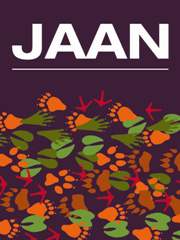Article contents
Feeding panicled tick-clover to growing goats reduces Haemonchus contortus infection without negative effects on growth
Published online by Cambridge University Press: 28 November 2014
Summary
In an effort to identify a forage legume with condensed tannins (CT) that reduce gastro-intestinal nematodes (GIN) in small ruminants without negative effects on nutrition, the following trial looked at the effects of two legumes containing CT on average daily gain (ADG) and faecal egg counts (FEC) in kid goats. Lespedeza cuneata (sericea lespedeza, SL) and Desmodium paniculatum (panicled tick-clover; PTC) were pelleted into isonitrogenous complete feeds containing 3.8% CT in a four week feeding trial. Compared to the alfalfa (Medicago sativa) control diet, SL decreased (P ≤ 0.05) feed efficiency and ADG while PTC had the same (P > 0.05) feed efficiency as alfalfa. The SL and PTC pelleted feeds increased (P = 0.006) daily feed intake by 4.5 kg and 3.7 kg, respectively, compared to alfalfa control, while kids consuming SL and PTC showed an average 44% reduction (P ≤ 0.05) in FEC compared to those fed alfalfa. The results showed that feeding PTC, an herbaceous, perennial legume native to much of North America, to goats may provide a natural means of reducing ruminant GIN while simultaneously providing a source of protein.
- Type
- Original Research
- Information
- Copyright
- Copyright © Cambridge University Press and Journal of Applied Animal Nutrition Ltd. 2014
References
- 3
- Cited by


